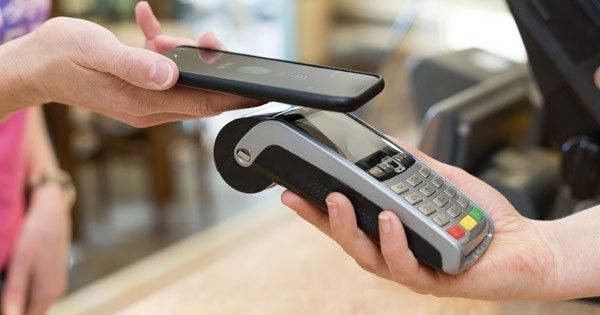Stay connected
Subscribe to our Inside WEX blog and follow us on social media for the insider view on everything WEX, from payments innovation to what it means to be a WEXer.
"*" indicates required fields

When most Americans shop in a bricks and mortar store and make their way up to the register, they pull out their physical wallet and pay. Sure, some early tech adopters tap or scan their mobile device, but for all intents and purposes, cash is still king in the mainstream. What needs to happen before digital wallet payments experience widespread U.S. consumer adoption?
Before offering an answer to this question, let’s define a digital wallet in the context of mobile-based in-store payments. Digital wallet technology lets consumers store information about debit and credit cards, prepaid cards, gift cards, and bank accounts on their mobile device so they can make digital payments at point of sale NFC terminals. Digital, a.k.a. mobile, wallets are getting a lot of attention, but all of the buzz hasn’t added up to market-wide behavioral change—yet.
Consumer uptake of digital wallets hasn’t been particularly speedy, but it has considerable potential that virtually no industry expert cares to argue against. In their October 2015 report on digital wallets in the U.S., McKinsey&Company estimates that in the U.S. today, approximately $200 billion in transactions are now flowing through digital wallets and that they could reach $1.2 trillion—that’s 18 million transactions and about 18-20% of total U.S. retail spending—by 2020.
And according to a survey conducted by the U.S. Federal Reserve in December 2014 and reported in Consumers and Mobile Financial Services 2015, 39% of all mobile payment users with smartphones made a point-of-sale payment using their phone in the previous 12 months. On the other hand, Gallup more recently reported that only 13% of U.S. adults with a smartphone have a digital wallet on their device, and 76% of those who have a digital wallet have never used it or have almost never used it to make a purchase from a retailer in the past 30 days.
Almost every industry report, survey, and blog post points to the value prop as what’s needed to convince more Americans to give mobile wallets a try. Technology providers, including financial institutions and merchants, are collectively tuning-in to what consumers are looking for, and they’re working hard to develop their solutions and sell them to the marketplace. The consensus among advisory folks is that each consumer segment is looking for something a little different and everyone is testing the waters in their own time. In other words, there is no one-size-fits-all value proposition for the digital wallet. Alas, the marketplace for digital wallets is still young.
What’s going to motivate consumers at-large to change the way they pay, particularly at the register? Any number of the following:
What has to happen before consumers leave their physical wallets at home?
1. They Need Access Where They Shop
It’s one thing to talk about consumer adoption of digital wallet technology, and another to talk about merchant adoption. Yet similarly, each party in the payment transaction as to buy-in to the solution. There are different benefits to retailers when/if they accept digital wallet payments, ranging from operational cost savings to next-generation customer satisfaction—and everything in between. At the end of the day, merchants need to accept the payment form in order for consumers to take advantage of it. But before we see more consumers pulling out their mobile devices at the register, peoples’ favorite stores need to give them reason to leave their physical wallets at home. Many, however, are waiting for consumer demand to drive their adoption.
2. They Need Comfort With a Wallet Provider
According to McKinsey&Company’s January 2014 Consumer and Shopper Insights, 62% of consumers don’t anticipate using multiple wallets. Presumably, people expect to have one go-to digital wallet solution they’ll access for everything, anywhere. Currently, there is incredible diversity among digital wallet providers—not to mention capabilities within individual offerings—and there’s no one standard solution. There may never be one ubiquitous answer, but until a solution emerges and hits the sweet spot for all parties, the market for digital wallets will remain fragmented.
3. They Need Digital Wallets to Integrate Into Their Existing Process
At the core, digital wallets hold the promise of enabling a truly seamless shopping experience. In an ideal scenario, a range of functionalities would consolidated into one solution so a shopper isn’t hitting the register and scanning a loyalty card, scanning a separate payment card, and scanning yet another piece of paper or screen image to redeem a coupon. What if they can take care of all three actions in one scan—and even capture receipt images and access transaction data to help them budget? Today, it’s probably easier for people to stick to what they’re familiar with—and wait for the technology to catch up to their expectations.
Waiting for widespread consumer behavior change isn’t easy. As eager as industry professionals are to see digital wallet technology mature—and as enthusiastic as some consumers may be about using it—the marketplace has plenty of room for growth. Patience, innovation, and a little time will likely lead to the change that so many are hoping for.
Subscribe to our Inside WEX blog and follow us on social media for the insider view on everything WEX, from payments innovation to what it means to be a WEXer.
"*" indicates required fields